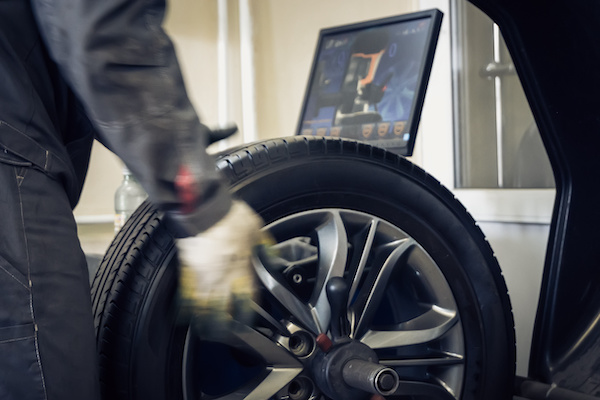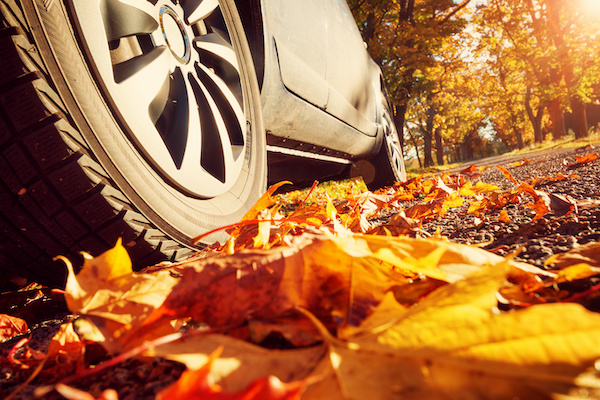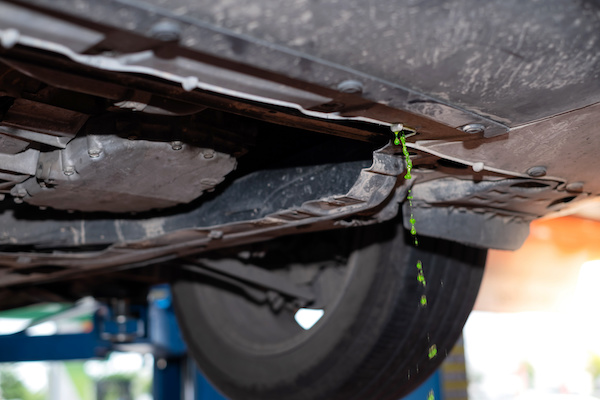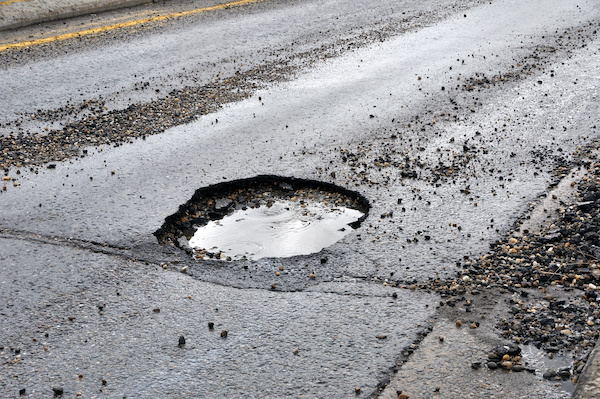Posted on 12/20/2021

Defensive driving is just a coined term for the performance of safe driving practices on the road. If you frequently drive daily and through heavy traffic, defensive driving is a great way to save yourself from tragic accidents. Defensive driving can start before you even get on the road. For instance, you can plan for your drive by looking up the weather and road conditions. Here are some other ways you can execute defensive driving: Check your mirrors periodically while you drive to be aware of the other vehicles around you. Be considerate and allow plenty of space for other vehicles to switch lanes. Switching lanes amid traffic can be dangerous, and trying to fight others trying to do it puts you at an increased risk of a vehicle accident. If you want to change lanes yourself, don't forget to use your signals. Maintain a safe distance between you and the vehicle in front of you, just in case you have to brake abruptly. Be on the lookout for aggressive drivers who may n ... read more
Posted on 11/17/2021
.jpeg)
A car breakdown can ruin someone's day, and it can happen in a blink of an eye. It can be dreadful and scary, especially if it's your first time and you have no idea what to do. And if you get in a frenzy at the moment, it can lead to larger issues and costly repairs. The first thing you should do at the first signs of a breakdown is to breathe and remain calm. Here are three simple steps to follow in this emergency: Turn on Your Hazards In unexpected situations like a car breakdown, you need to alert others of your condition. This is what hazard lights are made to do. Flicking these lights on will communicate to other people on the road that something is wrong and you need to get past them. Get Out of Traffic If you have some time before your car completely stops, you should try your best to get to the road shoulder. The shoulder is the safest spot to be in, and that's why you see most cars sit there. Once you get to the shoulder, you can call for roadside ... read more
Posted on 10/11/2021

Every car owner has their individual approach and vehicle maintenance methods; some have routine maintenance schedules that they follow religiously, while others may only attend to their car whenever they can get around to it. If car maintenance usually escapes you, it's not too late to break that habit. One of the most overlooked preventive maintenance items is tires. These can become worn quicker than most realize, especially if you drive on rough roads. Over time, wheels can become misaligned or imbalanced. If your wheels are in proper working condition, then you should not feel any shakiness in your steering wheel. Usually, when wheels become imbalanced, they affect your tires' wear pattern. You may see uneven wear on one particular side of your tire. When the weight of your vehicle is inconsistent and not balanced, it creates a heavier wear spot on certain parts of your tire and causes your steering wheel to vibrate. If the problem is not tended to for ... read more
Posted on 9/14/2021

Autumn is essentially a pre-game to the freezing temperatures and heavy snowfall of the winter. As the temperature begins to drop again, you'll see increased wear and tear on your vehicle. While you may not be contemplating this in the remaining heat of September, now is the perfect time to schedule a fall visit to your local auto repair shop. Instead of experiencing a car failure on the road when the winter weather arrives, your car will be in optimal driving condition to get you through the brisk autumn and into the holidays. At Gowen's Automotive Repairs, we can handle these four fall maintenance necessities for your vehicle: Battery Check. Harsh fall/winter weather can be just as tough on a car battery as the summer months. A battery may be functioning fine in the late summer and early fall but may falter when the temperatures drop this winter. Please have a trusted tech check the battery connections to ensure they're secure, clean, and free of corrosion. You should al ... read more
Posted on 8/10/2021

We all panic whenever we see puddling near our vehicles. How do you know what type of fluid it is? And how do you determine if it's a dangerous leak or not? Here is our vehicle fluid guide to determine what's leaking from your automobile by the color of the fluid. RED (OR PINK) FLUID: Red fluid usually indicates you've got a leak in your transmission or power steering system. This problem could result from a defective transmission seal or a hole in the return line that supports the fluid between systems. ORANGE FLUID: Various problems will cause an orange puddle. If rust develops in your radiator, this can cause an antifreeze leak or make condensation appear orange. Transmission fluid can also appear orange, depending on its age. YELLOW FLUID: A yellow fluid leak is typically a radiator coolant issue. This problem could be the outcome of a loose hose clamp or broken o-ring. Check your owner's manual when determining what type of coolant you ... read more
Posted on 7/9/2021
.jpeg)
It's 2021, and gas prices are the highest they have been in years. As a result, some of us are pinching pennies to fill up. Many people will have their tricks and tips on how to save money on gas. Some try to save by buying a certain way, whereas others try to change their driving habits. These are our top 5 tips on how to save some cash on gasoline: Compare gas prices using the Gasbuddy app. There are plenty of apps and websites out there that let you check gas prices at various gas stations near you. An excellent one for seeking out the lowest prices is Gasbuddy. These resources are free of use, and it uses your current location to filter out the best rates in your area. The rates are uploaded by other app or site users alike. Go easy on the gas. We advise you to cruise at a steady pace and not heavily to accelerate every chance you get. Especially on the highway, try to employ cruise control to get the most out of your gas. Don't carry heavy loads. You ... read more
Posted on 6/15/2021

Have you accidentally hit a curb or a pothole, and next thing you know, your vehicle can’t drive straight? If yes, your vehicle has one or more wheels misaligned, meaning that you have one or more wheels pointing in the wrong direction. Not only will your vehicle be challenging to control, but more issues can arise from a misaligned vehicle. Overall, it is not safe to operate a vehicle that has been misaligned. Here are the signs that you are due for a wheel alignment: Vehicle Pulling to One Side Your vehicle pulling to one side is the most significant sign that you need your tires realigned. If the road you’re driving along is flat and straight, your vehicle should continue to go straight. If you notice that it is veering off to the left or right, take it into an auto shop immediately. It is not safe to drive on the road when you exemplify this sign. Steering Wheel Off-Centered Similar to the last example ... read more
Posted on 5/17/2021
.jpeg)
The timing belt is an important component of a car engine. The timing belt drives parts in the engine that can be severely damaged in a moment if even the tiniest deviation in their relative movement occurs. That is why it is important to repair a timing belt as soon as possible. However, when the timing belt needs to be replaced varies from vehicle to vehicle. Furthermore, it is not just the amount of miles driven that matters. Your car's maintenance schedule will tell you when a timing belt needs to be replaced. The maintenance schedule for many cars can be found in the documents that come with the vehicle. However, as the car changes hands more often, it's more likely that this paperwork will be missing. There are, fortunately, other ways to determine when the timing belt needs to be replaced. For example: In Google, type in your car's make, model, and year, as well as the phrase "when to replace the timing belt." Contact our experts for assistance in dete ... read more
Posted on 4/21/2021

Potholes are bad for a great many reasons. Beyond being unsightly, they can do significant damage to your car. The critical areas that may sustain damage include your vehicle's wheels, suspension, and exhaust. Here's a breakdown of the potential damage and the consequences. Suspension Your car's suspension system ensures a smooth ride on any terrain, but hitting a pothole may result in damage to the system and its parts, especially the struts and shocks. A damaged suspension system may cause your car to become challenging to handle, swerve to one side, or create strange vibrations or sounds. Wheels The wheels of your vehicle are first in line to sustain damage after hitting a pothole. First, your tires will take the brunt of the damage and become wholly flat or suffer structural damage leading to bulges or tread separation. Additionally, after hitting a pothole, you may notice that your car's wheel alignment is off, which will cause it to veer to one side. The impl ... read more
Posted on 3/15/2021
.jpeg)
If your brakes are producing a squeaking sound or vibrating then there could be an issue with the brake rotor/disc. Your brake disc rotor helps in slowing down your vehicle. With constant use, it's subject to wear and tear. In case of an issue, you would need to replace the brake rotors. Read on for more information. Symptoms of A Bad Brake Rotor/Disc Keeping an eye on the following symptoms can help: Noise of Brakes If your brakes are producing a squeaking noise or if you hear grinding noise then it's time to inspect your brake system. You have to book an appointment with a service provider to be on the safe side. It's also possible that your brake pads are worn out. The Dashboard Brake Lights Are On If the dashboard brake lights are illuminated then it means your brake system is due for an inspection. Make sure the engaged parking brake is fully released. If you have a modern vehicle then the electronic system can be sending you a signal indicating an issue with t ... read more